
In June of 2020, in the midst of the Covid-19 pandemic, I was approached by my friend, Ephraim Zimmerman, to develop a health screening app for our high school. We had previously made a communication app for our school and had just completed an app for Northwestern University’s OLLI program. As with those apps, I would build the Android version and he would build the iOS version.
Our high school helped spread the word of our app to other schools and led us to be featured in the National Association of Independent Schools (NAIS) Magazine and on a segment on the local news.
By the end of 2021, 50 schools with 25,000 registered users across the United States had used SWS.
Prior to making the SWS app, I had only built two relatively simple Android apps, a communication app for my high school and an app for Northwestern University’s OLLI program. So when beginning the SWS project, my app development skills were pretty lackluster. However, I was able to learn what I needed along the way and, by the end, became a pretty competent app developer.
Effie and I collaborated on the app’s functionality and design. However, since his app development skills were better than mine, he built most of the features into the iOS app first, then I would adapt them for the Android version.
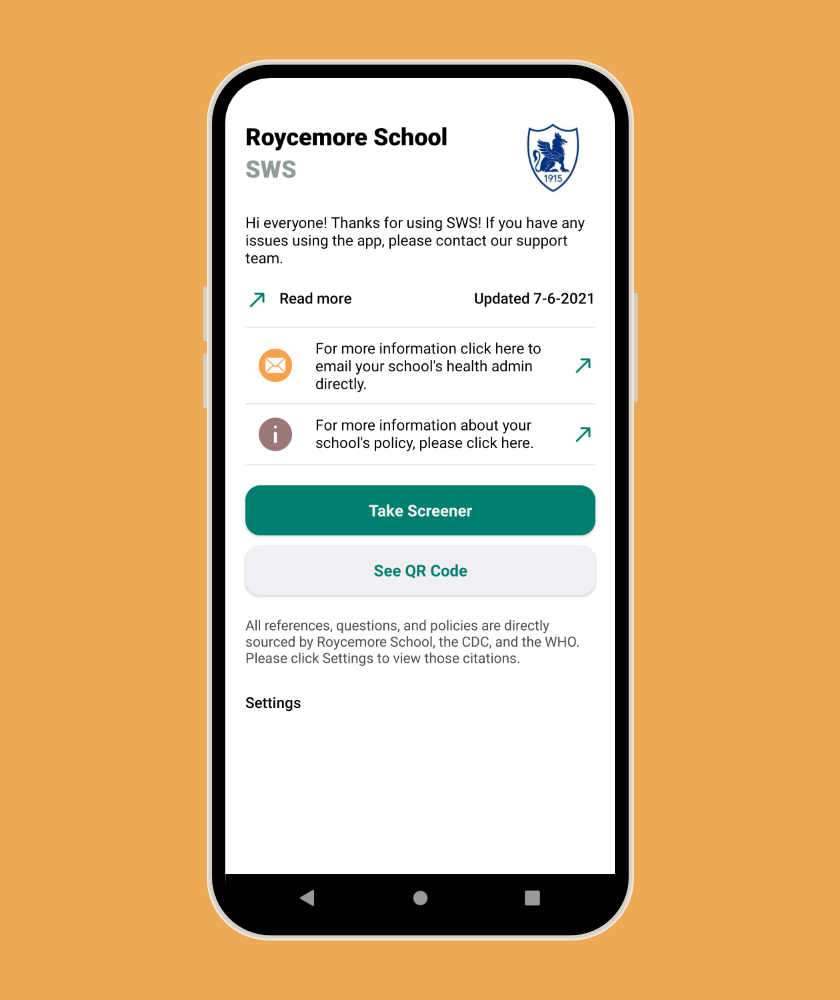
The structure of the app was fairly complex because we had to support a wide variety of use cases and account types. We had to allow for parents to be able to use the app for their younger children, for older students to be able to use the app themselves, and for teachers and school administrators to use the QR code scanner and admin dashboard.
Here are a few of the app’s major features and requirements:
- Daily health questionnaire with customizable questions
- Accounts system with support for multiple users in a family
- Multiple account types for students, parents, faculty/staff, and visitors
- QR code generator for users to be scanned in with at the entrance
- QR scanner that faculty and staff use to scan in students at the entrance
- Admin dashboard where faculty and staff can monitor the status of their students
The app was built natively for Android using Android Studio and Java. And for the backend, we used Google Firebase, which let us get everything up and running quickly.
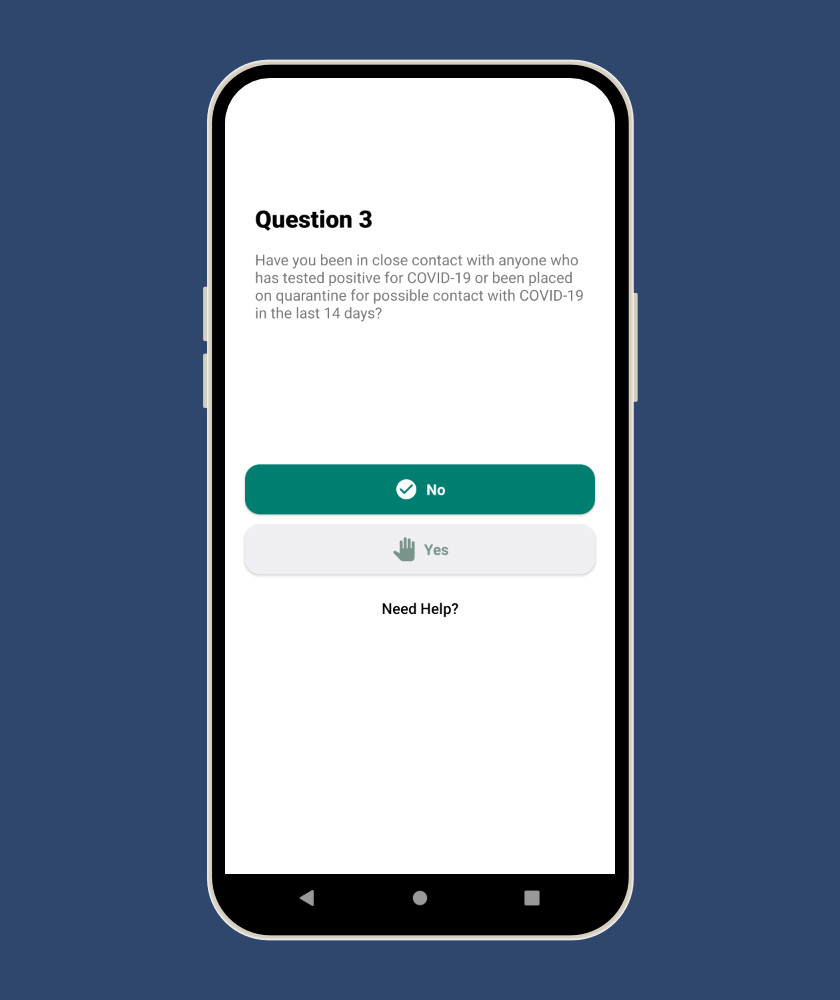
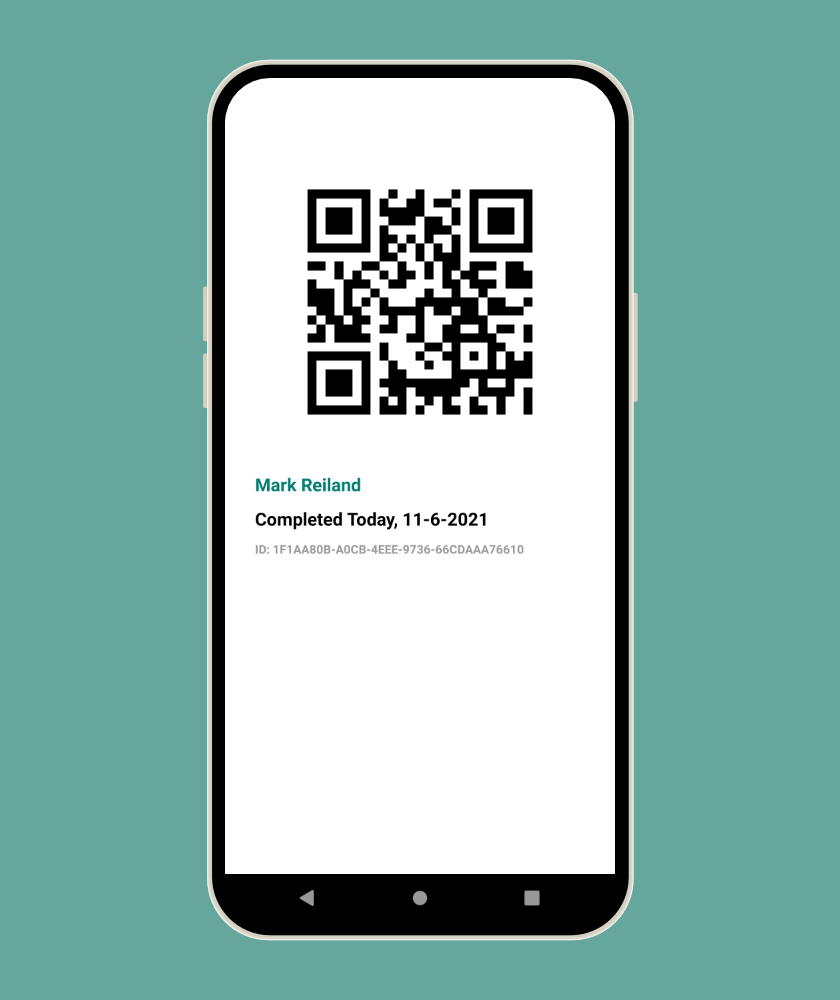
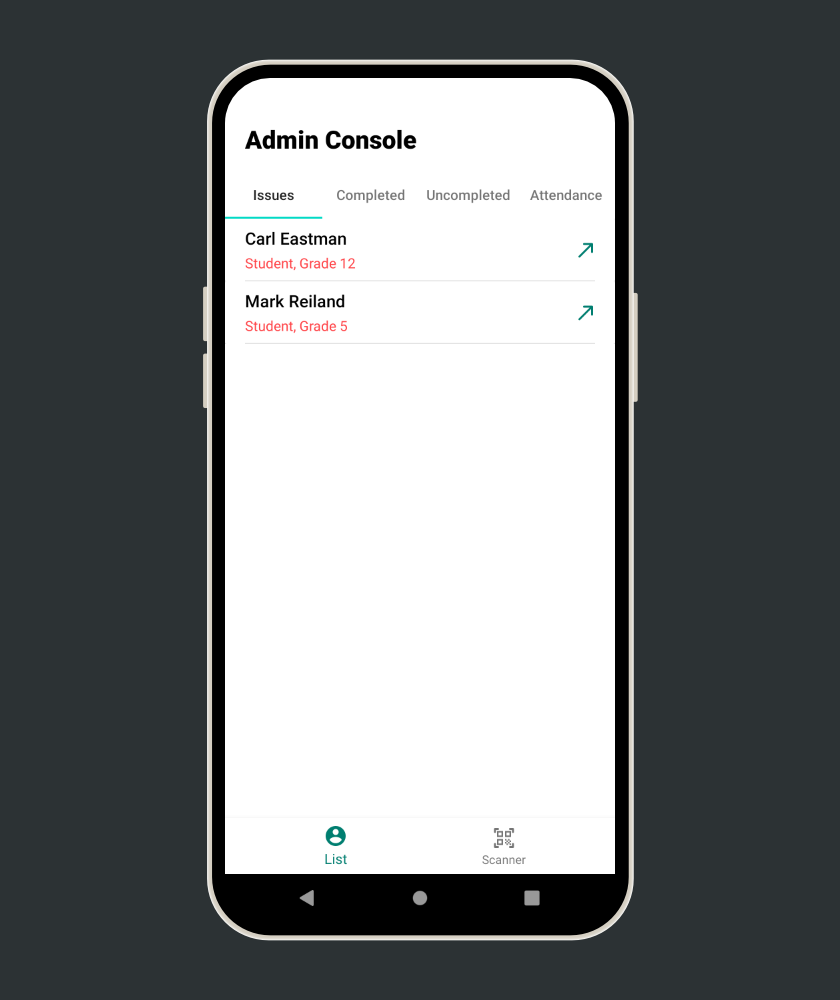
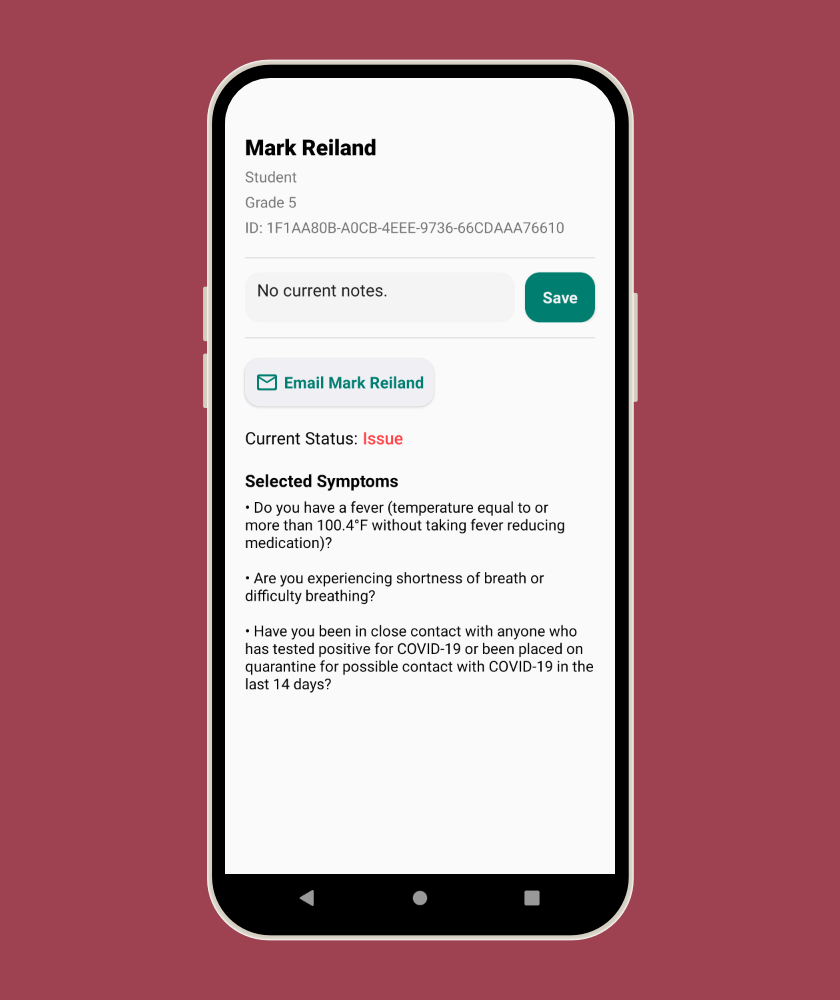
A significant part of the project was selling the app to schools. After the article was published in the National Association of Independent Schools’ Magazine and lots of word of mouth from various schools who had already been using the app, we had a huge influx of interest in the app from schools. We offered a 30 minute demo session with schools where we would walk them through the functionality of the app live and answer any questions they had. We gave well over 100 demos over the duration of the project.
Another major task was handling customer support. The SWS helpdesk offered support to anyone who used the app. We received thousands of emails, from school administrators needing assistance with setting up the app for their school, to parents who blamed us for not being able to sign in because they mistyped their email. This became an unexpectedly large part of the project, but ended up teaching us a lot about how to handle people and how to handle negative feedback about the app.